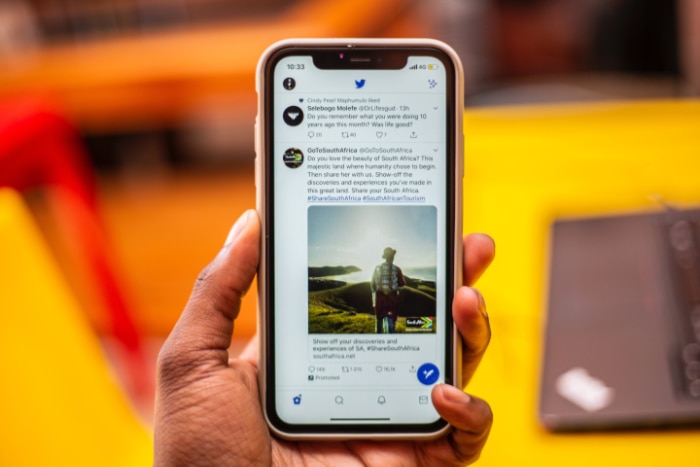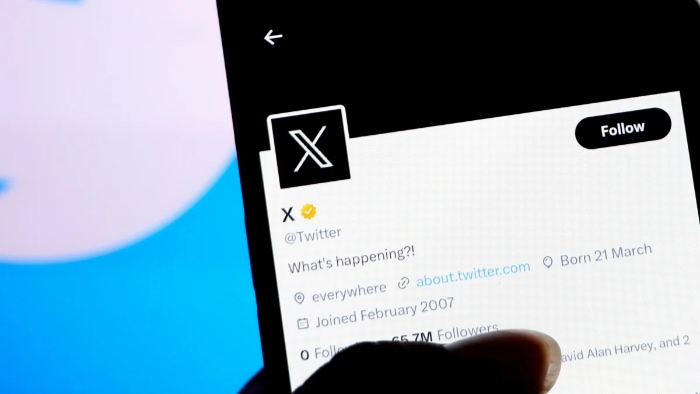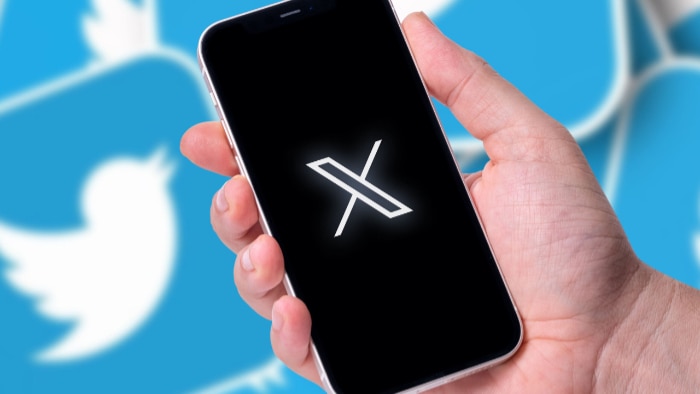Why Twitter Is So Toxic: Uncovering the Root Causes

Twitter, a powerhouse in the world of social media, has reshaped how we communicate, share news, and express our views. Yet, beneath its surface of hashtags and trending topics lies a less-discussed reality: an environment often riddled with toxicity.
From terse exchanges to full-blown cyber conflicts, this platform can be a hotbed for harsh interactions that sometimes overshadow its potential for positive communication.
The Anonymity Factor
Twitter, like many social media platforms, offers its users a cloak of anonymity. This feature, while it has its merits, also plays a significant role in fostering a toxic environment.
Anonymity on social media can be a double-edged sword, providing a shield for positive, free expression but also enabling negative behaviors without immediate consequences.
Anonymity and Reduced Accountability
Under the veil of anonymity, Twitter users often feel empowered to express opinions or engage in behaviors they might avoid in face-to-face interactions. This sense of detachment from one's real-world identity can lead to a reduction in accountability.
When users believe they won't be held responsible for their online actions, they may be more inclined to engage in harmful behaviors such as trolling, harassment, or spreading misinformation.
Cyberbullying and Harassment
Anonymity on Twitter has a direct correlation with the prevalence of cyberbullying and harassment. The platform's anonymous nature makes it easier for individuals to target others without fear of immediate repercussions.
Victims of such behavior often find it challenging to seek justice or relief, as perpetrators hide behind anonymous profiles.
Encouraging Impulsive Behavior
The anonymity provided by Twitter can also encourage impulsive behavior. When users feel they are not directly linked to their tweets, they might post content without fully considering the consequences or the impact of their words on others.
This impulsiveness can contribute to the spread of hostile and inflammatory content.
Challenges in Moderation
The anonymity factor on Twitter poses significant challenges for effective content moderation. Identifying and taking action against accounts that violate community standards becomes more complex when users hide behind anonymous profiles.
This issue complicates the efforts to create a safer and more respectful online environment.
The Contrast with Real-World Identity
While anonymity can be liberating for some, allowing them to express themselves without fear of judgment, it's crucial to recognize the stark contrast it creates with real-world identity. In the physical world, social norms and legal systems often keep toxic behavior in check.
However, in the anonymous world of Twitter, these checks are often absent, leading to a landscape where negative behavior can thrive unchecked.
The Echo Chamber Effect
The concept of echo chambers on social media, especially on platforms like Twitter, is a critical aspect of understanding the toxicity often observed online. An echo chamber occurs when users are exposed primarily to opinions and information that reinforce their existing beliefs, leading to a narrowed worldview and heightened intolerance for opposing views.
This phenomenon, fueled by Twitter's algorithms and user behavior, contributes significantly to the platform's toxic environment.
Formation of Echo Chambers
Echo chambers on Twitter are formed through a combination of user choices and algorithmic suggestions. Users typically follow accounts that align with their interests and viewpoints, creating a personalized feed.
Concurrently, Twitter's algorithms enhance this effect by recommending content and accounts based on past interactions, further solidifying the user's exposure to similar ideas and opinions.
Impact on Dialogue and Tolerance
The prevalence of echo chambers on Twitter significantly impacts the quality of dialogue and tolerance for different perspectives. In these bubbles, opposing views are often either not presented or are presented in a negative light.
This can lead to an amplification of extreme views and a decrease in the willingness to engage constructively with those who hold differing opinions.
Contribution to Misinformation Spread
Echo chambers also play a significant role in the spread of misinformation. Within these closed environments, unverified or false information can circulate rapidly, as it goes unchallenged by critical or differing perspectives.
Users in echo chambers may thus find themselves increasingly detached from factual accuracy, contributing to the overall toxicity of the platform.
Challenges in Breaking Echo Chambers
Breaking out of echo chambers on Twitter is challenging due to the self-reinforcing nature of these environments. Altering the algorithms to promote a more diverse range of viewpoints is a complex task, requiring a delicate balance between personalization and exposure to diverse content.
Moreover, encouraging users to step out of their comfort zones and engage with differing opinions requires a shift in social media consumption habits.
The Broader Social Impact
The echo chamber effect extends beyond individual Twitter feeds, impacting broader social and political discourse. As users become more entrenched in their viewpoints, the potential for constructive and inclusive dialogue diminishes.
This can lead to increased polarization and conflict in society, reflecting the profound impact that social media echo chambers can have on the real world.
The Speed of Information Sharing

Twitter stands out in the social media landscape for its rapid dissemination of information. While this feature is invaluable for staying updated, it also plays a significant role in contributing to the platform's toxic environment.
The speed at which information spreads on Twitter can often lead to misunderstandings and the amplification of false or harmful content.
Instant Communication and Its Drawbacks
Twitter's design for instant communication is a double-edged sword. It allows for real-time updates and swift public reactions, but this immediacy can also lead to hasty and unconsidered responses.
In the rush to be part of the ongoing conversation, users may post reactions or share information without verifying its accuracy, contributing to the spread of misinformation.
Pressure to React Quickly
The fast-paced nature of Twitter creates a pressure-cooker environment where users feel compelled to react immediately to ongoing events or trending topics. This pressure often leads to knee-jerk reactions rather than well-thought-out responses.
As a result, discussions can quickly devolve into arguments or toxic exchanges, as nuanced or balanced viewpoints are overshadowed by rapid-fire tweets.
Challenges in Fact-Checking
The speed at which information travels on Twitter poses significant challenges for fact-checking. Misinformation can spread across the network faster than it can be verified and corrected.
This issue is compounded by the tendency for sensational or controversial content to be shared more widely and quickly, regardless of its veracity.
Amplification of Emotional Responses
Twitter's rapid information flow tends to amplify emotional responses. Tweets that evoke strong feelings, whether anger, fear, or excitement, are more likely to be retweeted and liked, creating a feedback loop that can heighten tensions and toxicity.
This environment often values emotional reactions over rational discourse, further contributing to the platform's toxic atmosphere.
The Impact on Public Discourse
The speed of information sharing on Twitter significantly impacts public discourse. It can lead to the quick mobilization of support for causes or movements, but it also has the potential to spread panic or false narratives.
The platform's role in shaping public opinion and debates is substantial, making the management of its fast-paced nature crucial for fostering a healthier online community.
The Character Limit and Miscommunication

Twitter's defining feature, the character limit, originally set at 140 and now expanded to 280 characters, was designed to encourage concise and clear communication. However, this limit also presents significant challenges, particularly when it comes to accurately conveying complex ideas and emotions.
The constraints of this format can often lead to miscommunication, which plays a role in the toxicity observed on the platform.
Oversimplification of Complex Issues
The character limit on Twitter often forces users to oversimplify complex subjects. In trying to fit their message into a concise tweet, nuances are frequently lost, leading to a black-and-white portrayal of issues that are inherently gray.
This oversimplification can distort the true nature of a topic and lead to misunderstandings among readers.
Challenges in Conveying Tone and Nuance
Conveying tone and nuance within a limited number of characters is a significant challenge on Twitter. Without the benefit of vocal inflections or facial expressions, tweets can easily be misinterpreted.
A statement meant to be humorous or sarcastic can be taken literally, or a nuanced argument can be seen as blunt or offensive, leading to confusion and conflict.
Misinterpretations and Conflicts
Misinterpretations arising from the character limit can escalate into conflicts. When a tweet is taken out of context or its intended meaning is misconstrued, it can spark arguments and hostility.
This is particularly common in heated topics where every word can carry significant weight, and misinterpretations can fuel existing tensions.
Reliance on Threaded Tweets and External Links
To combat the limitations of the character count, users often rely on threaded tweets or external links to provide additional context. However, this workaround is not always effective.
Readers may not take the time to read through an entire thread or click on links, leading to partial understanding of the message being conveyed.
Impact on Public Perception and Relationships
The character limit's role in miscommunication affects not only individual interactions but also public perception and relationships. Public figures and organizations often struggle to convey complex policies or stances within the confines of a tweet, leading to public misperception.
Similarly, personal relationships can be strained by misinterpreted tweets, showing how the platform's fundamental design can influence both public and private spheres.
The Influence of High-Profile Users
High-profile users on Twitter, such as celebrities, politicians, and influencers, wield significant power in shaping conversations and influencing public opinion. Their tweets can reach millions of followers instantly, amplifying their impact on the platform.
This influence, while beneficial in some instances, can also contribute to the toxicity seen on Twitter, as their statements often set the tone for broader discussions and can trigger widespread reactions.
Amplification of Opinions and Statements
When high-profile users tweet, their opinions and statements are amplified far beyond the average user's reach. A single tweet from a celebrity or influential figure can spark instant debates, fanfare, or backlash.
This amplification can be a double-edged sword, spreading positive messages rapidly but also escalating controversial or harmful sentiments.
Role in Setting Trends and Agendas
High-profile users play a pivotal role in setting trends and agendas on Twitter. Their posts often dictate what topics become trending, directing public attention and discourse.
This power to influence the public agenda can shape societal conversations, but it also risks overshadowing important issues that may not receive celebrity attention.
Impact on Follower Behavior
The behavior of high-profile users can significantly impact how their followers interact on Twitter. Positive behavior, such as promoting constructive dialogue or raising awareness about social issues, can inspire followers to do the same.
Conversely, when these users engage in negative behaviors like spreading misinformation or making derogatory comments, it can validate similar behaviors among their audience.
Escalation of Conflicts
Conflicts involving high-profile users tend to escalate quickly on Twitter due to their vast reach. A disagreement or controversial statement can rapidly turn into a full-blown conflict, drawing in numerous users and sometimes leading to harassment or cyberbullying campaigns.
This escalation can further contribute to the platform's toxic environment.
The Role of Moderation and Policy

Moderation and policy enforcement are crucial elements in managing the content and interactions on Twitter. The platform's policies are designed to create a safe and respectful environment, but enforcing these rules presents significant challenges.
Effective moderation is key to reducing toxicity on Twitter, yet it remains an area fraught with complexity and controversy.
Challenges in Content Moderation
Content moderation on Twitter involves monitoring and managing millions of tweets daily, a task that is as enormous as it is complex. The platform has to balance the fine line between curbing harmful content and preserving freedom of speech.
Identifying and addressing hate speech, harassment, and misinformation while respecting users' rights to express themselves poses a continual challenge for Twitter.
Evolution of Twitter's Policies
Over the years, Twitter has evolved its policies in response to criticism and changing social norms. These policies now cover a range of issues, including hate speech, harassment, and the spread of false information.
However, the effectiveness of these policies often comes into question, especially in how consistently and swiftly they are enforced.
Automated Moderation and Its Limitations
Twitter employs automated systems to aid in content moderation, but these tools have limitations. Algorithms can struggle to understand context, nuance, and cultural differences, leading to errors in judgment.
While automation is necessary due to the sheer volume of content, it cannot fully replace human understanding and discretion.
User Reporting and Community Involvement
User reporting is a vital component of Twitter's moderation system. Users can report tweets they believe violate the platform's rules.
However, this system depends heavily on the community's willingness and ability to identify and report violations, which can lead to inconsistent enforcement and the burden of moderation falling on users.
The Impact of Ineffective Moderation
Ineffective moderation can have far-reaching consequences, allowing toxic content to proliferate and impacting the overall user experience. When users encounter unchecked hate speech, harassment, or misinformation, it can lead to a decline in platform engagement and trust.
Furthermore, it can have real-world implications, influencing public opinion and potentially leading to offline harm.
Conclusion
Twitter's journey through the digital world highlights a complex web of challenges contributing to its toxic environment. From the veil of anonymity to the echo chambers echoing divisive voices, the platform showcases a microcosm of broader societal issues in digital communication.
The character limit, while defining Twitter's unique style, often leads to miscommunication and oversimplification, adding to the misunderstandings and conflicts among users. The influence of high-profile users can swing the pendulum of public opinion and debate, sometimes fueling the fire of toxicity.
Moreover, the rapid pace of information sharing on Twitter amplifies both the benefits and drawbacks of digital connectivity. It becomes a battleground where speed often trumps accuracy, leading to the rampant spread of misinformation.
Tackling these challenges is not straightforward, as evidenced by the ongoing struggles with content moderation and policy enforcement. These efforts highlight the delicate balance between protecting freedom of expression and maintaining a respectful, safe online community.
Twitter, with all its complexities, continues to be a significant player in the realm of social media. Its struggles with toxicity are reflective of the larger challenges faced by digital platforms in fostering healthy, constructive, and inclusive online environments.


